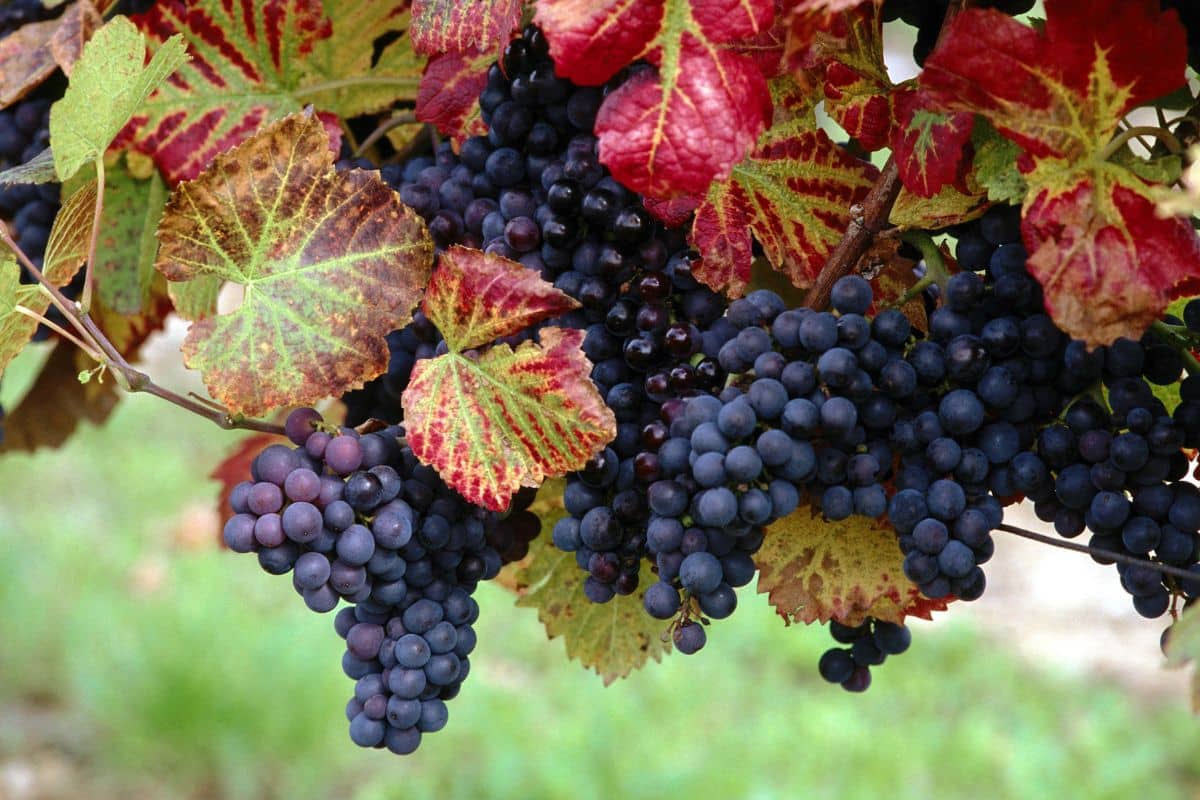Creating a thriving vineyard requires more than just attention to your grapevines. Strategic companion planting can significantly boost vine health, enhance grape quality, and create a balanced ecosystem in your vineyard. By selecting the right plant neighbors, you can naturally deter pests, attract beneficial insects, and improve soil conditions without relying heavily on chemical interventions.
Beneficial herbs and flowers for grapevines
Herbs make exceptional companions for grapevines due to their aromatic properties and ability to repel harmful insects. Lavender and rosemary are particularly valuable additions to any vineyard. These Mediterranean natives share similar growing requirements with grapevines, making them natural partners. Their strong scents confuse and repel grape-loving insects while attracting pollinators that benefit the entire garden ecosystem.
Borage deserves special mention as a grapevine companion. This herb produces blue, star-shaped flowers that attract beneficial insects like bees and parasitic wasps. These helpful visitors pollinate your vines and prey on harmful pests. Additionally, borage adds trace minerals to the soil as its leaves decompose, creating a natural nutrient cycle that benefits your grapevines.
Consider planting seasonal flowers that bloom through fall to maintain consistent beneficial insect populations. Marigolds are particularly effective as vineyard companions since they release compounds through their roots that suppress harmful nematodes which might otherwise damage grapevine roots.
Hyssop represents another excellent choice for vineyard borders. This perennial herb attracts beneficial insects while its deep root system helps prevent soil erosion around your vineyard. The fragrant purple flowers provide nectar for pollinators throughout the growing season without competing with your vines for resources.
Cover crops and ground covers for vineyard health
The soil beneath your grapevines deserves as much attention as the plants surrounding them. Strategic cover crops and ground covers can dramatically improve soil structure, prevent erosion, and enhance fertility in your vineyard. Clover varieties, particularly crimson and white clover, fix nitrogen from the air into the soil, providing a natural fertilizer source for your grapevines.
Buckwheat serves as an exceptional quick-growing cover crop between vineyard rows. It flowers rapidly, attracting beneficial insects, then can be cut and used as green manure before it sets seed. The decomposing buckwheat adds valuable organic matter to the soil while its fibrous roots help break up compacted earth, improving drainage around grapevine roots.
For sloped vineyards where erosion presents concerns, consider planting creeping thyme as ground cover. This low-growing herb forms a dense mat that holds soil in place while releasing aromatic compounds that may help deter certain vineyard pests. Similar to carefully maintained basil plants, thyme requires minimal water once established, making it an ideal companion in drier vineyard settings.
When selecting ground covers, avoid aggressive spreaders that might compete with your vines. Instead, choose plants that:
- Establish quickly but remain manageable
- Tolerate occasional foot traffic between rows
- Require minimal maintenance once established
- Support beneficial insect populations
- Add organic matter to soil when cut back
Fava beans represent another excellent cover crop option, particularly for winter protection in vineyards. These nitrogen-fixing plants improve soil fertility while their substantial root systems help prevent erosion during rainy seasons. Cut and mulch fava beans before they compete with vines for nutrients during the growing season.
Vegetables and fruits that complement grapevines
Certain vegetables and fruits can form mutually beneficial relationships with grapevines when planted strategically. Garlic and allium family members (including onions, leeks, and chives) release sulfur compounds that naturally deter many vineyard pests. Planting these aromatic bulbs around the perimeter of your vineyard creates a natural protective barrier against harmful insects.
Strawberries make excellent vineyard companions, particularly when planted as ground cover between rows. Their shallow root systems don’t compete significantly with established grapevines, and their spreading habit helps suppress weeds. The fruit attracts different pests than grapes, potentially diverting some problematic insects away from your vines.
While planning your vineyard companions, consider adding cucumber varieties to your garden plan. Though they shouldn’t be planted directly alongside vines due to potential disease overlap, cucumbers grown nearby can help monitor for early signs of downy mildew, which affects both plants but often appears on cucumbers first.
Certain aromatic herbs and vegetables may help mask the scent of ripening grapes from pests. Traditional Italian vineyard designs often incorporated basil, tomatoes, and peppers near grapevines, creating complementary growing environments that benefited all plants involved while confusing potential pest insects.
Be vigilant about monitoring plant health throughout your garden ecosystem. Just as you would watch for signs of disease on ornamental plants, inspect your vineyard companions regularly to catch and address any issues before they spread to your valuable grapevines.
Creating a balanced vineyard ecosystem
The most successful vineyards function as complete ecosystems rather than monocultures. Biodiversity within and around your vineyard creates natural resilience against pests and diseases. Consider establishing permanent insectary borders with native flowering plants that provide year-round habitat for beneficial insects.
Yarrow, dill, and fennel specifically attract parasitic wasps that target common grape pests. These beneficial insects lay eggs inside pest larvae, providing natural biological control without chemical interventions. Maintaining diverse plant heights and bloom times ensures continuous habitat for these helpful garden allies.
Even if space is limited, you can apply companion planting principles. Small-scale growing approaches often benefit most from companion planting since plant interactions become more concentrated in limited spaces.
When designing your vineyard ecosystem, consider these companion planting approaches:
- Intercropping beneficial herbs between vines
- Establishing permanent insectary borders around vineyard edges
- Rotating seasonal cover crops between rows
- Planting aromatic pest deterrents at vineyard entry points
- Creating diverse habitat zones throughout your growing area
Remember that effective companion planting requires observation and adaptation. What works in one climate or soil type might need adjustment in another. The most successful vineyard companion systems evolve over multiple growing seasons as you observe which plant combinations produce the healthiest vines and most abundant grape harvests in your specific growing conditions.

